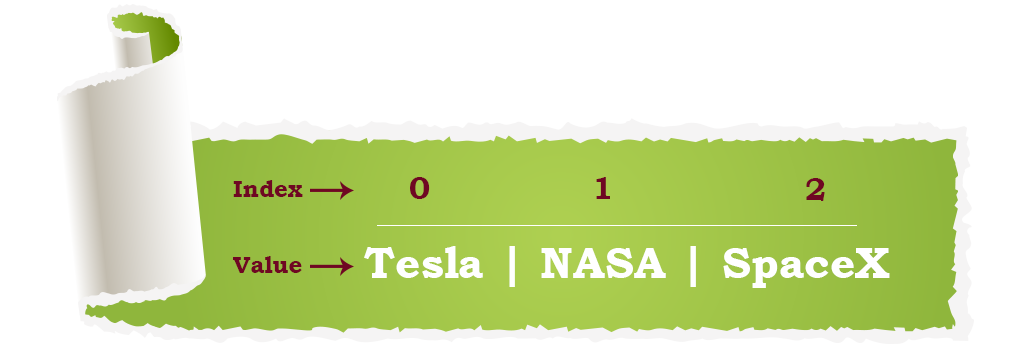Python Lists
By examining Python Lists with examples, we believe this post will meet your learning needs.
Python Lists are designed to store multiple items in a single variable.
List
Python includes 4 built-in data types for storing collections of data: Lists, Tuples, Sets, and Dictionary, each with a different purpose.
To create a list, use square brackets:
Let’s say we need to store the names of the top three tech companies. We can create a list instead of three separate variables:

Create a List:
Example
List Items
Python Lists allow items to be ordered, changed, and duplicated.
In lists, items are indexed by number, e.g., item 1 is indexed as 0, item 2 is indexed as 1, etc.
Ordered
The order of Python Lists refers to a defined order of items, and that order won’t change.
New items will be added at the end of the list if they are added to an existing list.
Although some list methods change the order, in general, the items will remain in the same order.
Allow Duplicates
Python Lists can have items with the same value because they are indexed:
The following values can be duplicated in lists:
Example
List Length
The len() function allows you to identify the number of items in a list:
Count the items in the list:
Example
Changeable
Lists in Python can be modified. After a list has been created, we can change, add, and remove items from it.
The = operator can be used to assign new values to items in a list.
Here is an example where we would like to change the name “Google”.
Modify List Item:
Example

type()
Python classifies lists as objects with the data type ‘list’:
Lists have what data type?
Example
The list() Constructor
When creating a new list, you can also use the list() constructor.
Making a List with the list() constructor:
Example
List Items – Data Types
Any data type i.e: (integer, float, string, etc.) can be used as a list item:
Boolean, int, and string data types:
Example
Different types of data can be contained in a list:
Integers, strings, and boolean values are included in this list:
Example
Python Collections (Arrays)
The Python programming language supports four types of collection data:
- Lists are ordered collections that can be modified. Duplication of members is permitted.
- Tuples are ordered and unchangeable collections. Member duplication is permitted.
- Sets are unindexed and unordered collections. Duplicate members are prohibited.
- Dictionary is a set of items that is ordered * and changeable. Duplicate members are not permitted.
Additional Information: Dictionary entries in Python 3.6 and earlier are unordered. The order of dictionaries has been introduced in Python version 3.7.
Understanding a collection type’s properties is helpful when selecting one. It is possible to retain meaning when selecting the right type of data set, and it is also possible to increase security or efficiency by selecting the right type.
Python Lists Advantages
Here are some key advantages of using lists in Python:
- Lists are mutable, which means you can modify their contents by adding, removing, or changing elements. This flexibility allows you to update, extend, or modify a list as needed during runtime. Additionally, lists are dynamic in size, meaning they can grow or shrink dynamically to accommodate the number of elements you need to store.
- Lists in Python maintain the order of elements, which means you can access elements by their index. This property is particularly useful when you need to store and retrieve data in a specific order or when you want to perform operations based on the position of elements within the list.
- Lists in Python can contain elements of different data types. You can store integers, strings, floats, booleans, or even other lists within a single list. This versatility allows you to handle and manipulate diverse data efficiently.
- Lists support indexing and slicing operations, which enable you to access specific elements or extract sub-lists. You can retrieve elements by their index, loop through the list, or access multiple elements using slicing notation. This capability makes it easy to work with specific subsets of data within a list.
- Python provides a wide range of built-in methods and functions for lists. These include
append(),extend(),insert(),remove(),pop(),sort(),reverse(), and more. These methods make it convenient to add, remove, sort, and manipulate elements in a list without having to implement these operations from scratch. - Lists can store large amounts of data, making them suitable for tasks such as storing and processing collections of user inputs, database records, or file contents. They provide an efficient way to organize and manage large volumes of related data.
- Lists support iteration and looping constructs in Python. You can use a
forloop to iterate over the elements of a list, perform operations on each element, or extract information from the list. This makes it easy to work with collections of data and perform repetitive tasks. - Lists allow you to perform a wide range of data manipulations, including concatenation, repetition, and comprehension. You can combine lists, repeat elements, and create new lists using list comprehension, providing a concise and efficient way to transform and manipulate data.
